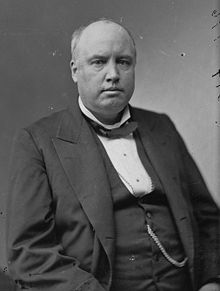 |
| Lewis Wallace |
 |
| Robert Ingersoll |
When
the famous atheist, Robert Ingersoll, challenged Lewis Wallace to
prove that Christ is the Son of God, who knew what would come of it?
Fifteen years and many adventures later, Wallace sat down to begin an
epic story considered a masterpiece in Christian literature; Ben-Hur:
A Tale of the Christ.
Ben-Hur
is a combination of Wallace's love for not only romance, but
geography, adventure, history, betrayal, and finally, revenge.
Written and published in 1876, Wallace's novel was a dream he wanted
to materialize for his readers, a book that would show them a
tangible picture of Christ, the Son of God.
| Charlton Heston as Ben-Hur: 1959 |
The
story follows Judah Ben-Hur, (a prince of the house of Hur).
Betrayed by his childhood friend, (Messala) Ben-Hur was sent to a
roman galley ship. After five years, a new passenger by the
name of Quintus Arrius, (a tribunal) noticed the young man in the
galley. Considerably younger than the rest of the prisoners,
there was something about the way he rowed; he rowed with drive,
ambition. Quintus conversed with Judah and found out about how
he was betrayed and how he lived, hoping to be able to find his
mother and sister. When a storm broke out and everything save
Judah and Quintus were swallowed by the sea, Ben-Hur
saved Quintus Arrius, and in return, Arrius adopted Judah. Thus, the
young man regained his freedom.
| Judah and the Sheik Ilderim |
In
time, Quintus died and left his fortune to his adopted son. Judah went to seek out an old servant, one who had been loyal to his
father. The servant, Simonedes, was found, and he (as well as
his daughter Esther) were still loyal to the house of Hur.
Judah wandered to a stadium, where his enemy, Messala, was practicing
for a chariot race. Encamped nearby was the Sheik Ilderim, who
made known his need for a driver in the tournament. Ben-Hur
jumped at the opportunity, secretly vowing revenge on his nemesis,
while Messala vowed revenge on Ben-Hur.
When
the great day of the chariot race came, the crowds in the
stadium
were split between who would be the ultimate victor. In the
end, Messala was badly injured from an accident with Judah's chariot,
and would never walk again. Ben-Hur, however, won the
tournament as well as the satisfaction that Messala would not cause
any more strife.
Through
his adventures, Ben-Hur started to notice Simonedes daughter, Esther,
whom he (much later) married. Through the development of this
tale, the story of Christ is parallelled along with Ben-Hur's.
When Judah realized that Christ was not a zealot whose ultimate goal
was to overthrow the Roman Empire, he understood that this
Savior not only wanted outward allegiance, but the love that comes
from a pure heart.
While Lew Wallace's timeless classic has been read and enjoyed by countless readers throughout the ages, it also makes one think. Christ died for a reason; some do not understand why, Ben-Hur did not in the first place. His mistake was creating (imagining) the Savior as he wanted him to be. In the end, Judah understood that no one should ever imagine Christ the way he or she want or fantasize him to be. That is one reason the 1959 film version never showed the face of Jesus. He is always more to us in every aspect of our lives than we realize.
While Lew Wallace's timeless classic has been read and enjoyed by countless readers throughout the ages, it also makes one think. Christ died for a reason; some do not understand why, Ben-Hur did not in the first place. His mistake was creating (imagining) the Savior as he wanted him to be. In the end, Judah understood that no one should ever imagine Christ the way he or she want or fantasize him to be. That is one reason the 1959 film version never showed the face of Jesus. He is always more to us in every aspect of our lives than we realize.

Interesting post! I hadn't heard the backstory to Ben Hur yet. Thanks.
ReplyDeleteOn one point I was a bit confused...was Messala trying to get revenge on Ben Hur, or was it ONLY the other way round?
I could be forgetting some important part of the story, but I felt the desperate urge to nitpick. :D
!Noah!